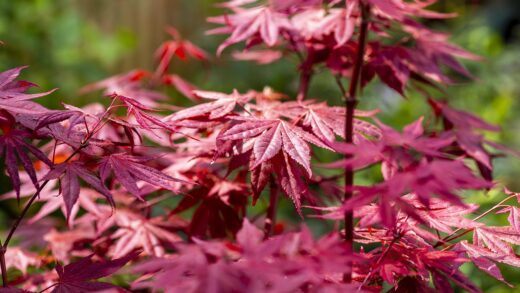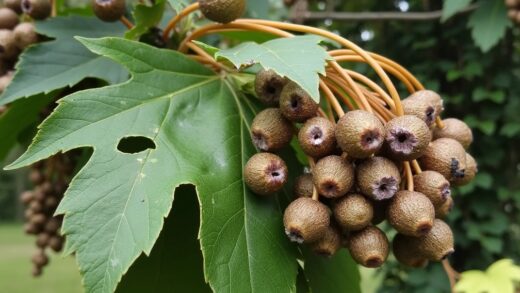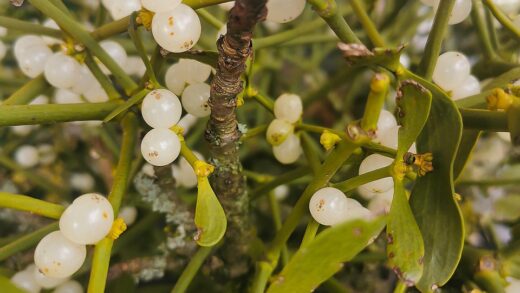Pruning and cutting back are essential horticultural practices that transform cosmos from simply being beautiful to being truly spectacular. While these plants will grow and flower without any intervention, a few simple and strategic cuts can dramatically increase the number of blooms, extend the flowering season, and create a fuller, more well-behaved plant. The main pruning tasks for cosmos are deadheading, pinching back, and occasionally, rejuvenation cutting. Each of these techniques serves a specific purpose in manipulating the plant’s growth to achieve the most desirable aesthetic and productive outcome.
The most fundamental and ongoing pruning task is deadheading. This is the simple act of removing flowers as they fade. This practice is crucial because it prevents the plant from forming seeds. For an annual like cosmos, the ultimate goal is to reproduce, and once it begins to successfully form seeds, its hormonal signals change, and flower production slows down or stops altogether. By consistently removing the spent blooms, you are tricking the plant into thinking it has not yet succeeded in its reproductive mission, compelling it to produce more and more flowers in an attempt to create seeds.
Another key technique, performed early in the plant’s life, is known as “pinching back.” This involves removing the central growing tip of a young plant to encourage branching. While it may feel counterintuitive to snip off the top of a healthy young plant, this single cut stimulates the growth of side shoots from the nodes below. This results in a plant that is not tall and sparse, but shorter, stockier, and much bushier, with significantly more stems—each of which will produce its own flowers.
These pruning techniques are not about controlling a plant’s size in a restrictive way but are about actively shaping its growth to maximize its beauty and health. They are simple, require minimal tools, and have a profound impact on the performance of your cosmos. By incorporating these practices into your regular garden care routine, you can ensure your cosmos plants reach their full potential, providing a continuous and breathtaking display of color and movement from summer right through to the first frost.
The importance of deadheading for continuous blooms
Deadheading is the single most impactful pruning practice for promoting a long and prolific flowering season in cosmos. The process is straightforward: as soon as a flower’s petals begin to wilt and fall, the entire flower head should be removed. The reason this is so effective lies in the plant’s biology. As an annual, the primary purpose of a cosmos plant is to produce seeds to ensure the next generation. The flower is simply the precursor to the seed. If the plant is allowed to successfully develop seeds, it has fulfilled its life’s purpose, and its internal signals will tell it to slow down or cease flower production.
More articles on this topic
By removing the fading flower before it can develop a seed head, you are interrupting this natural cycle. This sends a signal back to the plant that its reproductive effort has failed, prompting it to redirect its energy into producing more flowers to try again. This creates a continuous feedback loop of bloom production. A plant that is regularly deadheaded will continue to flower profusely for months, often right up until the first hard frost, whereas a plant left to its own devices will have a much shorter blooming period as its energy shifts to seed maturation.
The correct technique for deadheading is also important for the plant’s appearance and future growth. It is not enough to simply pull off the dead petals. You should trace the stem of the spent flower down to the first set of healthy leaves and make a clean cut just above this point. Using a pair of clean, sharp scissors or pruning shears will prevent tearing the stem. This method not only removes the unsightly dead flower but also encourages new growth to emerge from the leaf axils, leading to a fuller, more branched plant.
Regularly tending to your cosmos in this way also provides a good opportunity to inspect the plants for any signs of pests or diseases, allowing for early intervention. While it can seem like a tedious task, especially if you have a large planting, dedicating a small amount of time to deadheading every few days will pay enormous dividends in the form of a vibrant, non-stop floral display. It is a simple investment of time that yields a huge return in garden beauty.
The technique of ‘pinching back’ young plants
“Pinching back” is a proactive pruning technique performed on young cosmos plants to encourage a bushier and more floriferous growth habit. This is best done when the plant is still small, typically when it has reached a height of about 20-30 centimeters and has several sets of true leaves. The process involves removing the very top portion of the main, central stem. You can literally pinch it off with your thumb and forefinger, or use a pair of clean snips for a neater cut. The cut should be made just above a pair of leaves.
More articles on this topic
The science behind pinching back is related to a phenomenon called apical dominance. The main, central growing tip of a plant (the apical meristem) produces a hormone called auxin, which flows downwards and suppresses the growth of the lateral buds (the side shoots) located at the leaf nodes further down the stem. By removing this main growing tip, you remove the source of the suppressing hormone. This frees the lateral buds to grow, and the plant will begin to send out multiple side branches instead of continuing to grow as a single, tall stalk.
The result of this single, simple cut is a dramatic change in the plant’s structure. Instead of one main stem producing a flower at its tip, you will have multiple stems, each capable of producing its own flowers. This leads to a plant that is significantly fuller, more rounded, and covered in a much greater number of blooms throughout the season. The resulting plant is also typically shorter and sturdier, making it less likely to be damaged by wind and rain and reducing the need for staking, especially for medium-height varieties.
It is important to perform this technique early in the plant’s life. Pinching back a mature plant is less effective and will only delay flowering. While it can feel like a setback to remove healthy growth from a young plant, the long-term benefits are well worth it. This one-time task sets the foundation for a much more robust and productive plant for the entire season. It is a perfect example of how a small, early intervention can have a large and positive impact on the plant’s overall performance.
Mid-season rejuvenation pruning
For some of the taller, more vigorous varieties of cosmos, a more drastic form of pruning can be employed mid-season to rejuvenate the plants. By mid-summer, especially in very hot climates, tall cosmos can sometimes become leggy, sparse at the base, and less productive in their flowering, even with regular deadheading. In this situation, a “Chelsea chop,” so named because it is often done in late May around the time of the Chelsea Flower Show in the UK, can be an effective solution. This involves cutting back the entire plant by about one-third to one-half of its height.
This may seem like a very severe action, but cosmos are remarkably resilient and respond well to this type of hard pruning. The cut stimulates a flush of new growth from the lower portions of the stems, resulting in a much fuller, bushier plant for the second half of the season. This new growth will be strong and healthy, and it will produce a magnificent display of flowers in late summer and autumn. This technique effectively resets the plant, correcting any legginess and encouraging a more compact and floriferous habit.
The timing of this rejuvenation pruning is critical. It should be done in early to mid-summer, before the peak flowering period has begun. Cutting the plant back too late in the season will sacrifice the main flush of blooms and may not leave enough time for the plant to regrow and flower again before the first frost. This technique is a trade-off: you are sacrificing some of the early-to-mid-summer flowers in exchange for a much better and tidier display later in the season.
This type of hard pruning is generally reserved for taller, more sprawling varieties that tend to get out of hand. It is not necessary for dwarf or more compact cultivars, for which pinching back and regular deadheading are sufficient. For gardeners with long growing seasons, this mid-season chop can be a valuable tool for keeping large cosmos plantings looking fresh and vibrant from the beginning of the season right through to the end.
Pruning for shape and size control
Beyond promoting blooms, pruning can also be used to control the overall shape and size of your cosmos plants, helping them to integrate better into your garden design. For example, if a particularly vigorous plant is starting to encroach on its neighbors, you can selectively prune back some of the longest, most wayward stems. When doing this, always cut back to a leaf node or a junction with another stem. This will encourage the new growth to be directed inwards, maintaining a tidier and more contained shape.
This type of selective pruning is also useful for creating a more uniform look in a formal planting bed. By regularly snipping back the tallest stems, you can maintain a more even height across a group of cosmos plants, creating a neat, cohesive block of color. This is an ongoing process throughout the growing season, requiring a light touch and a good eye. It allows you to gently guide the plant’s growth rather than letting it take on its natural, sometimes wild, form.
In container plantings, pruning for size is especially important. Dwarf varieties are best for containers, but even they can sometimes outgrow their space. Regular pinching and trimming of the outer stems can help to keep the plant in proportion to its pot. This also helps to maintain good air circulation within the dense foliage of a container-grown plant, which is important for preventing fungal diseases in the more humid microclimate of a pot.
It is always important to remember that cosmos have a naturally airy and somewhat informal growth habit. Overly aggressive or rigid pruning can detract from this natural charm. The goal is not to shear the plant into a formal hedge, but to gently guide its growth to keep it healthy, productive, and in harmony with the surrounding plants. A light, selective touch is always more effective than a severe, indiscriminate cut.
Tools and best practices for cutting cosmos
Having the right tools makes any pruning task easier and better for the plant. For most cosmos pruning, including deadheading and pinching, a good pair of sharp, clean pruning shears or floral snips is ideal. A sharp blade makes a clean cut that heals quickly, whereas a dull blade can crush the stem, causing unnecessary damage and creating an entry point for diseases. For very tender young stems, you can simply use your fingernails to pinch off the tips, but for all other cuts, a tool is recommended.
Cleanliness is a crucial best practice in pruning. Your tools should be cleaned regularly to prevent the spread of plant diseases. After working on a diseased plant, or simply as a routine measure, wipe the blades of your pruners with a cloth soaked in rubbing alcohol or a 10% bleach solution. This simple step of sanitation can prevent you from inadvertently transferring fungal spores or bacteria from one plant to another as you move through your garden.
When making a cut, the placement is key. Always aim to cut just above a set of leaves or a side shoot. This is where the plant has latent buds that will be stimulated into growth by the pruning. Leaving a long, bare stub of a stem above the leaves is unsightly and the stub will eventually die back anyway, potentially creating a site for disease to enter. A clean cut close to the node will result in faster healing and healthier new growth.
Finally, consider the timing of your pruning activities. It is best to prune on a dry day, as this allows the cut surfaces to dry and callus over quickly, sealing the wound against potential infections. Avoid pruning during wet or humid weather, which can encourage the growth of fungal pathogens on the fresh cuts. By following these simple best practices—using sharp, clean tools and making well-placed cuts in dry weather—you can ensure that your pruning efforts are beneficial and contribute positively to the health and beauty of your cosmos plants.


















